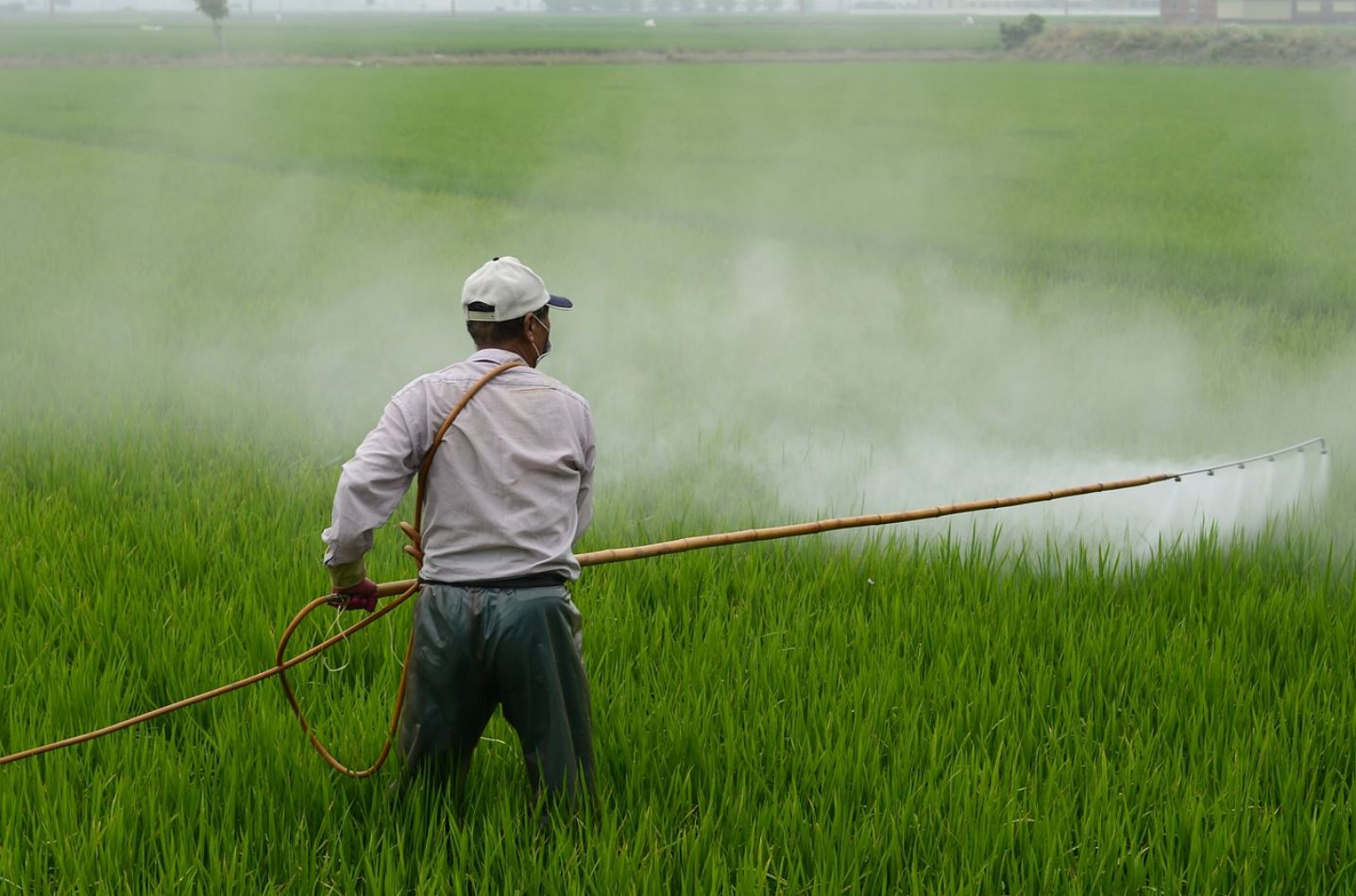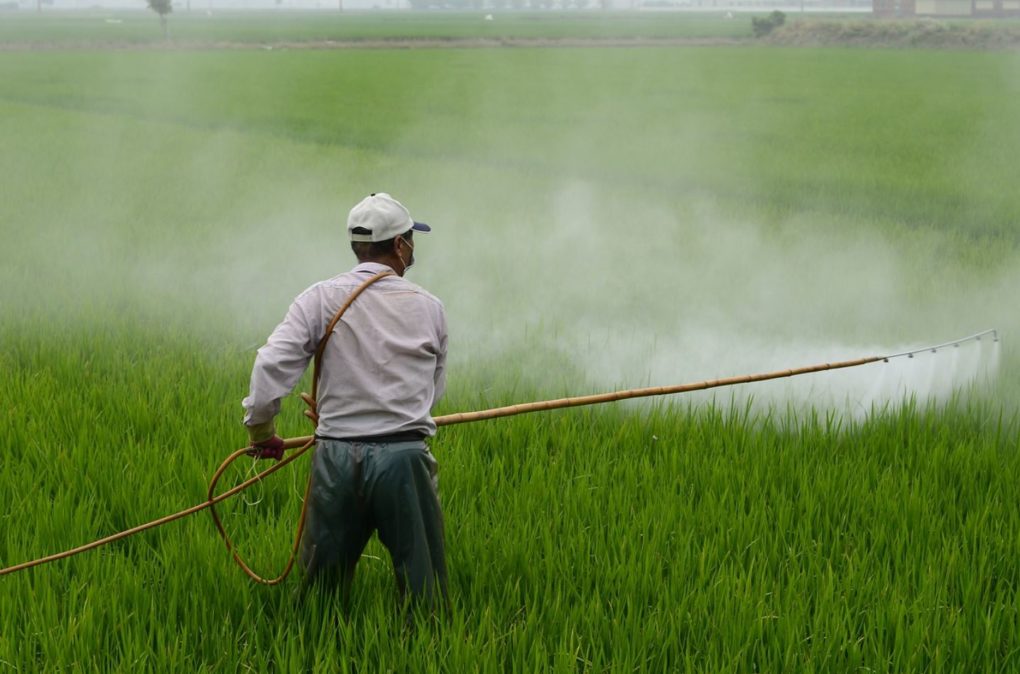Farm Workers at Risk: Research Shows That Exposure to Paraquat Is Linked to Parkinson’s Disease
 By Miguel Leyva
By Miguel Leyva
Around the world, many countries have banned paraquat, but the U.S. has not yet taken this action. Although sold under many names, usually, farmers can purchase the herbicide in stores as Gramoxone, manufactured by Syngenta.
Paraquat, one of the most deadly weed killers in existence, is at the same time a lucrative pesticide and a dangerous chemical that causes violent deaths. Research has also connected paraquat to Parkinson’s disease, which will eventually affect 1.2 million Americans by 2030, according to Parkinson’s Foundation. There is substantial information from studies and research proving that the toxic weed killer is causing exposed individuals to develop Parkinson’s disease.
Farm owners and workers know to be careful around the pesticide due to the warnings found all over its label about how toxic this substance can be for humans.
Paraquat is not only very toxic but also very quickly acting. A small quantity of the poison can kill a person. For this reason, users take care not to splash or spill even the smallest amounts of herbicide.
Still, the Environmental Protection Agency (EPA) has been slow to ban this substance altogether. Even though it is currently in the category of RUPs (restricted-use chemical) and can only be applied by trained people that have a license for its use, the agency is reluctant for some reason or another when push comes to shove.
Widget not in any sidebars
Paraquat Uses
This chemical is hazardous, but the farmers who still use it to keep weeds out of their crops and make more money, as a result, are still willing to take on risks.
As agricultural workers face more resistant weeds, the herbicide most used in farming today — glyphosate — is ineffective. For example, From Ohio to Indiana, in Midwest states, the weed marestail is a scourge. This situation leaves many people turning to paraquat as a solution but wondering how to keep up with crop production for future generations.
Southern states are at the front lines in a battle over the use of Dicamba, a weedkiller that agricultural producers have relied on for a very long time. And no-till agriculture is gaining traction in the U.S. as more farmers realize its many benefits. Thus, there is a shift towards paraquat use, enabling them to manage weeds with less tillage.
Paraquat Is Prohibited in Many Countries
The European Union, China, and other 30 countries banned paraquat. This fact should be enough to raise some concerns about the weedkiller’s toxicity here at home. Europeans have decided since 2007 to stop using the dangerous chemical in their never-ending quest to maintain a healthy population and continent. The Union took this decision after research discovered its connection to Parkinson’s.
Information about the risks arising from exposure to the herbicide has become public for many years now. Thus, the environmental agency has long been concerned with this subject. In 1997 they reported that people get the most exposure to paraquat when preparing the substance and after application, such as cleaning up spills or disposing of leftovers in their environment.
How To Grow Half Of Your Own Food (Ad)
Although the agency banned the weedkiller’s use in residential areas, it has found that, nonetheless, it can harm individuals living in rural areas where workers can spray it.
Studies Link Paraquat Exposure to Parkinson’s Disease
The dangers of pesticide exposure are long-known. In April 2009, an article in the peer-reviewed journal AJE raised awareness significantly about Parkinson’s risk from paraquat. This article was important because it analyzed 368 incident Parkinson’s disease cases from California against a population control of 341 people.
The paper concluded a correlation between the use of the toxic weedkiller in agricultural fields and illness amongst residents. Moreover, the authors said that the presence of the herbicide within 500 meters from residential areas increased by seventy-five percent the resident’s risk of Parkinson’s.
The researchers invented an intricate tool to assess paraquat exposure from land usage data, pesticide use reports, geospatial mapping technology, and, more importantly, medical records of people living near farmland where these pesticides are used.
In another important article from 2011, the research subjects were 110 people with Parkinson’s disease who were also farm workers. After paraquat exposure, the result was that workers were approximately 2.5 times more at risk of developing Parkinson’s than before exposure; why was this?
Yet another paper from June 2011 concluded there is a strong link between the weedkiller and Parkinson’s. An article examining the genetic makeup of individuals exposed to paraquat and their risk of Parkinson’s concluded that those with a specific genetic variation were 11 times more at risk to suffer from the disease.
Exposure to the toxic weedkiller is most common among people who have used or handled it. However, exposure of pregnant women living near farmland sprayed with paraquat poses a particular risk because they are more vulnerable during pregnancy than at any other point in life: A fetus’ developing brain cells could suffer permanent damage from exposure.
Therefore, we now have access to extensive research that shows strong correlations between paraquat exposure and Parkinson’s disease.
Syngenta Did Not Warn Farmers about the Risks of Developing Parkinson’s
Many people out there don’t understand how the EPA and agricultural science and technology companies work. The responsibility falls on the manufacturer to find and inform the public about adverse health findings once the agency approves the product. Less accountability goes into approving things than one would expect from an organization of this caliber.
The findings informing of new dangers could be reports or internal studies. The chemical manufacturers must notify the public of such newly discovered risks. Still, they often do not follow through with their obligations which leaves us all at risk.
The chemical industry is regulated by law, as well. If they do not produce a safe product — and if the company can improve its safety standards but chooses not to do so — it can be held accountable.
In an exciting turn of events that has many people concerned for their safety, it is now known that Jon Heylings — formerly in charge of research related to paraquat — is now speaking out against Syngenta.
The former Lead Toxicologist says Syngenta knew about the many health risks linked to paraquat and was informed about how the weed killer could be produced in a safer form but did nothing to implement such safety changes.
As the number of farmers suffering from a paraquat-induced illness has grown exponentially, many are now fighting to find justice in state courts against manufacturers. They now seek compensation and relief from this debilitating disease caused by these toxic chemicals years ago.
Along with Syngenta, the defendants in these lawsuits are important manufacturers, such as Chevron USA.
Miguel Leyva is Atraxia Law’s case manager. Miguel gathers information about paraquat exposure and Parkinson’s disease for farmers and workers with disabilities caused by paraquat exposure, all in addition to supporting their family members.
Image: Pixabay



